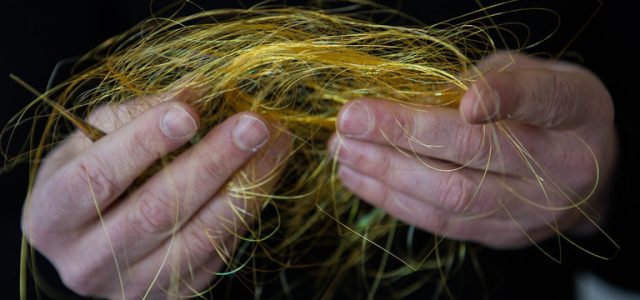
Just when you thought wearables were tracking every possible metric of human biology, someone comes out with another input: sweat. The idea is kinda duh-why-not? Sweat is the next best thing to blood for learning about internal information. Shoot, we can even use spit to determine your ancestry, why not analyse sweat?
HFT Smart Sensors is not a wearable company from a consumer standpoint, but a B2B technology provider. They are creating the next generation of smart textiles which would be purchased by client facing companies to be implemented in tomorrow’s technology.
If HFT is able to do what they want to, things are about to get a little sweaty in wearables. So exciting.
HFT cites the advantages of analyzing sweat, from measuring micronutrients and hormones to DNA. This data could completely overhaul how we train, useful in a number of applications.
First, let’s look at how they plan to do all this.
How They Do it
HFT is integrating their technology with fibers, allowing for application in multiple situations, but there’s more. Because it’s fiber-based, the technology is able to absorb, giving it the full opportunity to analyze sweat.
Current applications are smart clothes and wrist devices, but these fibers could be applied anywhere. Fibers are more tolerable to our tactile receptors; it can sit against our skin without feeling like we’re wearing a device.
Think: Levi’s Trucker Jacket, but with way more functionality, way more data.
Most trackers are clearly plastic devices sitting on our wrists. This product has the ability to get very close to our data without changing our lifestyles.
What Sweat Can Tell Us
The team at HFT hasn’t finished their product yet. The sensors they’ve included today don’t include everything they plan to eventually include. Ultimately, sweat can tell us about salts, lactate, glucose, urea, creatinine, and hormones. It can even inform DNA.
So far, HFT’s technology is able to track electrolytes, like sodium and potassium, and neurotransmitters, like adrenaline and dopamine. They are also working on lactate and glucose sensors.
In the long run, just about anything we excrete through our sweat glands could be on the plate.
How We Can Use That Information
The immediate future of this technology is to better understand hydration levels, but also hormones. These are two key elements to performance athletes, so we expect those are the first ways we’ll see it applied.
Electrolytes, which can be measured to analyze hydration levels, facilitate communication between the nervous system and the muscular systems. When these electrolytes drop, athletes can experience cramps or motor issues.
Neurotransmitters can tell us about mood or mental states. Because matches are lost in the head first, athletes and coaches who could stay ahead of an athlete’s state of mind could gain the edge.
Where We Can Use it
In truth, this has broad application possibilities, from individuals who want to know more about their bodies during sport to Space programs who want to monitor astronauts.
In the short run, HFT sees application for sports training and performances, endurance control, soreness reduction just to name a few. We like it for space travel too, but why not for everyday life?
Who couldn’t benefit from clothing that tells him when he is dehydrated? What wouldn’t we give to know how our hormonal level are fluctuating, men and women?
There are steps we could take to make our lives more consistent if we could just see inside our bodies.
It seems that every iteration of news on wearables inches us closer to the world where we have to change this topic from wearables to something else. This type of detailed technology is a huge step in that direction, so expect big things, soon.
If you want to know more about sweat-measuring technology, you can find HFT at the Wearables Technology Conference in 2016.





